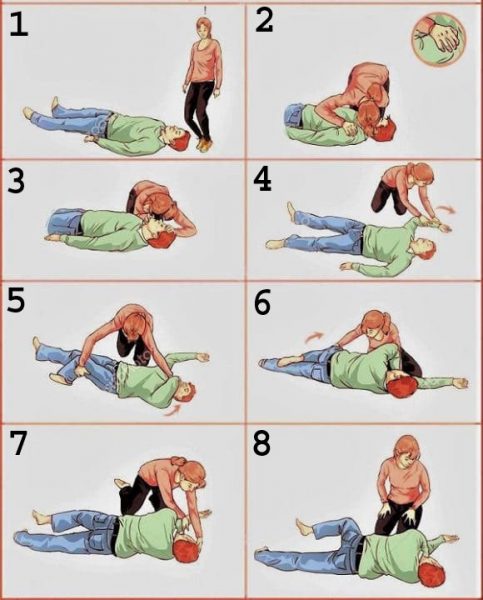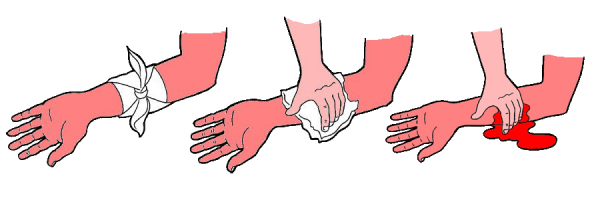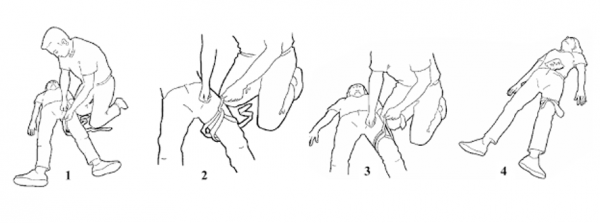How should the driver behave during an accident or when he witnesses an accident?
How to provide assistance in the best possible way and contribute to preserving a person’s life and saving him from a difficult situation
Or reduce the severity of the injury.
There are reasons that lead to an accident, including the following:
- Human errors: Human errors may occur, but a person must be careful to avoid accidents.
- Unsafe vehicles: A defect in the car or a vehicle that is not suitable for driving may lead to an accident.
- Unsafe methods: Rural roads, mountain roads and narrow roads are extremely dangerous.
Different age groups
- 18–19 year: They risk 5-6 times more and can be involved in a traffic accident.
- 45–54 year: They have good knowledge and reactions and are less involved in accidents.
- 65–74 year: They have extensive experience in driving, assessing risks, and avoiding things that may be dangerous.
- 75 One year and more: They take risks 5-6 minutes, their reaction time is long, and they may be exposed to larger accidents as a result.
If, God forbid, an accident occurs with you or you witness an accident, you must follow the following:
Note: When you witness an accident occurring, you are obligated to stop until the ambulance and police arrive and provide information:
- Turn on the warning lights (four-wheel drive) in the car through this button

- Place a warning triangle behind the car or accident at an appropriate distance between 100 and 150 meters
- Take a look at the situation and call the emergency number on 112
- Provide sufficient information to the people with whom the accident occurred
- Provide assistance to the injured as much as possible
- Report the accident and injuries to the police
- If there are objects on the street that obstruct traffic, move them to the side of the road
- If there are fatalities, do not move the car unless it poses a danger to the rest of the traffic
- Fill out an accident form, mention the details and how the accident occurred, and draw a diagram if possible
Do not flee the scene of the accident, no matter how dangerous the situation is. This is considered a crime and is strictly punishable by law
Of course, your driving license will be withdrawn from you when you flee the scene of an accident.
Also know that accidents can happen whether you are the one responsible or someone else
Therefore, you must face the situation and act completely calmly.
How do you provide assistance to someone who is unconscious and cannot breathe?
Remove any objects that obstruct the injured person’s breathing and do the following:
- Place the injured person on his back
- Open the injured person’s mouth for easy access to air
- Give the injured person artificial respiration (there is no need to think about it, as this is a humanitarian condition and you must perform it)
- Close the victim’s nose by pressing it and pump air from your mouth to his mouth
- Notice that his chest is inflating, which means air is reaching his lungs
- Repeat the process 10 to 15 times a minute quickly, raising your mouth quickly when pumping air into his mouth.
- After you are sure that he is breathing normally, place him on his side so that it is easy for him to breathe and is not obstructed by his tongue or any other things.
See the steps in the picture

There are several reasons that require moving the injured person from his place to the side of the road or a safe place, including:
- The presence of a fire or the possibility of fire or explosions
- The presence of traffic may accidentally run over the injured person
- There is a danger to the life of the injured person due to his presence on harmful objects
The injured person is transported to the hospital by ambulance only, as it is equipped with the necessary medical tools and equipment
To make his condition stable until he arrives at the hospital, in the event that he is transported by a person or a regular car
His condition may worsen as a result of moving the injured person or increasing his bleeding due to movement.
How can someone with a deep wound or bleeding be helped until an ambulance arrives?
If the person has a deep wound, you should do the following
See the following picture:

This is done by applying pressure directly to the wound
- Clean the wound site as much as possible
- Place a bandage or clean cloth on the wound
- Tie the piece tightly over the wound to prevent blood flow
Whether the wound is small or large, press it firmly.
Then reduce the pressure so that the blood reaches the organs supplied by the affected blood vessels.
If the bleeding continues, repeat the ball again and apply pressure to the wound.
Use a tourniquet, belt, etc. to prevent blood flow

- Use a tie and wrap it into a strip or anything that can be tied together, such as a belt or a piece of cloth.
- The piece is wrapped over the wound to prevent blood from flowing and leaving the site of the injury.
- Relax the compression bandage slightly every 10 minutes for a period of seconds until the blood tissues are nourished and do not loosen it completely.
- Do not cover the tourniquet so that the doctor can see it in the hospital.
You must remain at the scene of the accident until the police and ambulance arrive and support the injured
This is a humanitarian duty if you were not the one who caused the accident, and it is also a duty and obligation if you were the one who caused it, and you must confront the matter calmly.
When you see the arrival of police cars and ambulances, provide the information and what they ask of you.
If you arrive at the scene of an accident and see ambulances and police at the scene
In this case, you do not have to stop and you can continue your walk quietly so as not to cause an obstruction to their work or traffic.
The number 112 is the emergency number designated for any emergency
The police, firefighters, ambulances, and rescue teams can be called by calling 112
When you call emergency services, you should keep your phone with you and provide them with the following information:
- The place or address of the accident, and if you do not know that, you can explain it to them or tell them any details that will lead them to you
- Type of accident and vehicles involved
- Number of injured as a result of the accident
- Type of injuries if you can evaluate them
- Your full name and the phone number you are calling from so they can stay in touch with you until they arrive
Additional information about accidents
Traffic accidents increase on Fridays, Saturdays and Sundays because they are holidays
The rate of accidents at night increases by three times more than during the day
Because driving conditions at night are different from during the day and are worse.
The hours of accidents vary, but most of them occur between 6 and 8 am
At the start of work, school, etc
And also from 15 to 18 pm, as these times are crowded times, the end of work hours, etc.
The accidents that happen to a driver while traveling often occur at the end of his trip
Because he is extremely tired and exhausted if he drives for long distances and for a long time.
Accidents involving pedestrians often occur in the dark at pedestrian crossings
The result of the driver incorrectly assessing the conditions, especially if the weather is bad and visibility is poor.
Most fatal accidents occur outside populated areas due to high speeds of cars
Unlike most accidents that occur within populated areas, which often do not result in loss of life
This is due to restrictions on low speeds, and statistics indicate that the number of people who die in Sweden
It ranges between 400 and 600 people annually, and most accidents occur in the dark and dawn, or during poor visibility and bad weather conditions.
Or when drivers drink alcohol accompanied by high speed, which unfortunately causes loss of life.
There is an ambition in Sweden, which is to upgrade to zero, which means reducing the number of deaths due to accidents to zero annually
As a driver, you should not drive your car according to what you think, and you should always drive according to what the road and the situation you are in require.
